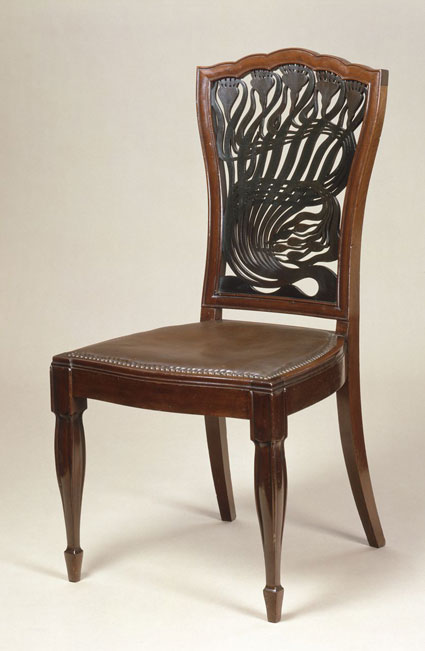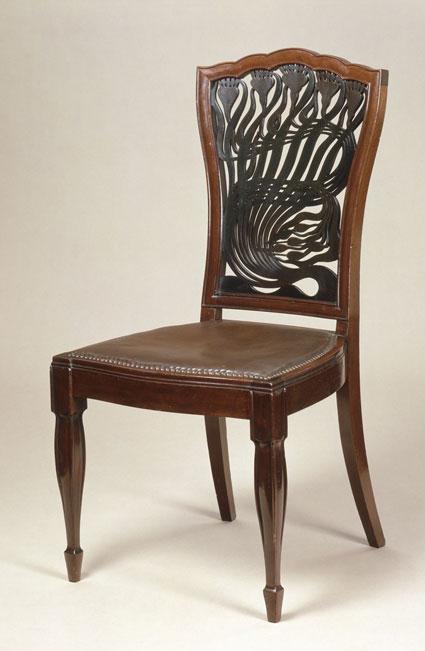Speaking about the Collectors Committee, a famed LACMA event in which curators make a presentation to donors to solicit funds for dream objects for the permanent collection, Wendy Kaplan, the museum’s head of decorative arts and design, told the New York Times in May, “It’s nerve-racking. You tell yourself it’s only an object, not your health. But you’ve researched it intensively, and you’re crushed if you don’t get it.”
Well, Wendy didn’t get the object in question, a renowned A. H. Mackmurdo chair that is universally believed to signal the start of Art Nouveau. As Wendy mentioned to me last week, she’d identified the chair via a London dealer last fall and was crestfallen when it wasn’t one of the works selected to enter the permanent collection in the spring of 2008. What happened next is a story of extreme curatorial perseverance.

Designed by Arthur Heygate Mackmurdo (England, 1851-1942) for the Century Guild (London, 1882-88); made by Collinson & Lock, London, Chair, c. 1883
Determined to bring this seminal piece of art to LACMA, she connected with colleagues at the Huntington to discuss a joint acquisition, figuring it would be easier to raise half of the money needed than the whole pot. If you have the pleasure of knowing Wendy—she’s beyond smart and charming—then you instinctively know that she of course made it happen. The Huntington was game and so were LACMA donors, including longtime supporters Max Palevsky and Jodie Evans and an early fan of the chair from the outset, MaryLou Boone. (Wendy said had it not been for MaryLou, she might have given up somewhere along the way.) Many months passed and ultimately, Wendy said, she has never poured more time and energy into bringing an object to LACMA than with this remarkable work of art. When I asked Wendy to describe the impact it has had on her she noted simply that it’s “That Chair.” Now, along with our friends at the Huntington, we can also say that it’s our chair. The chair will go on view at the Huntington in December.



